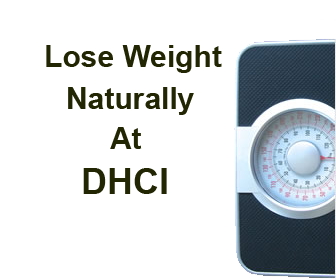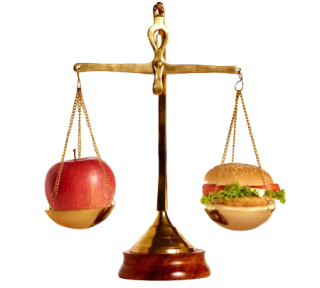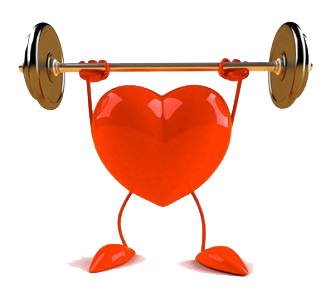The Diet & How To Lose Weight
This informative article outlines the types of exercises that are appropriate for people who have not been active for some time, or who are very large. It covers the benefits of activity and provides safety tips. As well, the article outlines specific guidelines for finding appropriate activities, both weightbearing and non-weightbearing, and how to maintain them in your life.
Getting Active at Any Size
Do you feel that you can barely do any activity at all? That you can’t exercise, play sports, or become more fit? Even if you are a very large person, or haven’t been active for a long time you can still bring physical activity into your life.
Large and very large people face special challenges in trying to be active. You may not be able to bend or move in the same way that other people can. It may be hard to find clothes and equipment for exercising. You may feel self-conscious being active around other people.
Facing these challenges is hard—but it can be done! You can start being more active and healthier—no matter what your size!
Why should I be active?
Being active helps you live longer and protects you from many different diseases including
• diabetes
• heart disease and stroke
• high blood pressure
• osteoporosis (a disease leading to weak bones that can break easily)
• osteoarthritis (wearing away of the tissue that protects the joints)
If you have one of these problems, being active may help control the problem.
Regular physical activity helps you feel better because it:
• improves your self-image
• lowers your stress
• boosts your mood
• gives you more energy
• helps you move with more grace and confidence
• helps you fall asleep at night and sleep well
• increases your strength.
How do I get started?
To start being more active and keep at it:
• Start slowly. Your body needs time to get used to your new activity.
• Warm up. Warm-ups get your body ready for action. Shrug your shoulders, tap your toes, swing your arms, or march in place. You should spend a few minutes warming up for any activity—even walking.
• Cool down. Slow down little by little. If you have been walking fast, walk slower to cool down. Or stretch for a few minutes. Cooling down may protect your heart, relax your muscles, and keep you from getting hurt.
• Set goals. Set short-term and long-term goals. A short-term goal may be to walk 5-10 minutes at least 3 days for 1 week. A long-term goal may be to walk 30 minutes most days of the week by the end of 6 months.
• Track progress. Keep a journal of your activity. You may not feel like you are making progress but when you look back at where you started, you may be pleasantly surprised!
• Fit activity into your daily life. Plan ahead and try to be active when it works best for you.
• Get support. Get a family member or friend to be active with you. It may be more fun, and an exercise buddy can cheer you on.
• Have fun! Try different activities to find the ones you really enjoy.
Do I need to see my health care provider before I start exercising?
You should see your doctor if:
• you have not been active for years
• you are active now and are changing from a moderate to a more intense activity
• you have diabetes, heart disease, or high blood pressure
• you have arthritis or an injury (like a knee injury).
What physical activities can large and very large people do?
You can do:
• sports
• planned exercise
• household chores
• yard work
• social activities (like dancing).
Exercise or physical activity does not have to be hard or boring to be good for you. Anything that gets you moving around—even for only a few minutes a day—is a healthy start to getting more fit.
Most very large people can do some or all of the activities in this article. You don’t need special skills or a lot of equipment.
This article describes both weightbearing and non-weightbearing activities. Weightbearing activities, like walking, bowling, and golfing involve lifting or pushing your own body weight.
Non-weightbearing activities, like swimming, put less stress on your joints because you don’t have to lift or push your own weight. If your feet or joints hurt when you stand, non-weightbearing activities may be best for you.
Walking (weightbearing)
The walking that you do during the day (like doing chores around the house or in the yard) can help you be more fit. But regular, steady walking that makes you breathe heavier can help you to be healthier. It will give your heart and lungs—as well as your leg muscles—a good workout.
If you are not active now, start slowly. Try to walk 5 minutes a day for the first week. Walk 8 minutes the next week. Stay at 8–minute walks until you feel comfortable. Then increase your walks to 11 minutes. Slowly lengthen each walk by 3 minutes—or walk faster.
Tips for walking:
• Stand up straight, lift your rib cage, and look straight ahead (but keep your shoulders relaxed). This will let your spine curve in a natural, healthy position.
• Swing your arms and move at a steady pace. This will also help keep your fingers from swelling.
• Wear comfortable walking shoes with a lot of support. If you walk often, you may need to buy new shoes every 6 to 8 months.
• Make walking fun. Walk with a friend or pet. Walk in places you enjoy, like a park or shopping mall.
Dancing (weightbearing or non-weightbearing)
You can dance in a health club, in a nightclub, or at home. To dance at home, just move your body to some lively music!
Dancing on your feet is a weightbearing activity. Dancing while seated lets you move your arms and legs to music while taking the weight off your feet. This may be a good choice if you can’t stand on your feet very long.
Water Workouts (non-weightbearing)
Exercising in water helps you feel:
• Flexible. You can bend and move your body in water in ways you can’t on land.
• Strong. Working against the water will help your body get stronger.
• At less risk of injury. Water makes your body float. This keeps your joints from being pounded or jarred and helps prevent sore muscles and injury.
• Refreshed. You can keep cooler in water—even when you are working hard.
• You don’t need to know how to swim to work out in water—you can do shallow-water or deep-water exercises without swimming.
• For shallow-water exercise, the water level should be between your waist and your chest. If the water is too shallow, it will be hard to move your arms underwater. If the water is deeper than chest height, it will be hard to keep your feet touching the pool bottom.
• For deep-water exercise, most of your body is underwater. This means that your whole body will get a good workout. For safety and comfort, wear a foam belt or life jacket.
Many swim centers offer classes in water workouts. Check with the ones in your area to find the best water workout for you.
Bicycling (non-weightbearing)
You can bicycle indoors on an exercise bike, or outdoors on a road bike. Biking does not stress any one part of the body—your weight is spread between your arms, back, and hips.
You may want to use a recumbent bike. On this type of bike, you sit low to the ground with your legs reaching forward to the pedals. This may feel better than sitting upright. The seat on a recumbent bike is also wider than the seat on an upright bike.
For biking outdoors, you may want to try a mountain bike. These bikes have wider tires and are heavy. You can also buy a larger seat to put on your bike.
Make sure the bike you buy has a weight rating at least as high as your own weight.
Stretching (weightbearing or non-weightbearing)
Stretching helps:
• make you more flexible (to help keep you from getting hurt)
• make you feel relaxed
• improve your blood flow
• keep your muscles from getting tight after doing other exercises.
You don’t have to set aside a special time or place to stretch. At home or at work, stand up, push your arms toward the ceiling, and stretch. Stretch slowly and only enough to feel tightness—not until you feel pain. Hold the stretch, without bouncing, for about 30 seconds. Don’t stretch cold muscles
Yoga and tai chi are types of stretching. They help you breath deeply, relax, and get rid of stress. Your local fitness center may offer yoga, tai chi, or other stretching classes. You may want to start with “gentle” classes, like those aimed at seniors.
Lifestyle Activities
Your activities do not have to be planned. You can make small day-to-day changes to improve your health.
For example:
• Take 2- to 3-minute walking breaks at work a few times a day.
• Put away the TV remote control—get up to change the channel.
• March in place during TV commercials.
• Sit in a rocking chair and push off the floor with your feet.
• Walk the dog.
• Walk while you talk on a cordless phone.
• Take the stairs instead of the elevator.
• Doing chores like lawn mowing, leaf raking, gardening, and housework can also improve your health.
Safety Tips
Drink plenty of water!
Water helps every cell and organ in your body work properly. It cushions your joints, improves your bowel patterns, and keeps your body cool.
• Try these tips to exercise safely.
Stop exercising right away if you:
◦ have pain or pressure in the left-chest or mid-chest area—or left neck, shoulder, or arm
◦ feel dizzy or sick
◦ break out in a cold sweat
◦ have muscle cramps
◦ feel pain in your joints, feet, ankles, or legs. You could hurt yourself if you ignore the pain.
(Ask your health care provider what to do if you have any of these symptoms.)
• Slow down if out of breath. You should be able to talk while exercising without gasping for breath.
• Drink lots of water before, during, and after exercise (even water workouts) to replace the water you lose by sweating.
• Do not do hard exercise for 2 hours after a big meal (but a 5- to 10-minute walk is OK). If you eat small meals, you can exercise more often.
• Wear the right clothes: ◦ Wear lightweight, loose-fitting tops so you can move easily.
◦ Women should wear a good support bra.
◦ Wear supportive athletic shoes for weight-bearing activities.
◦ Wear clothes made of fabrics that absorb sweat and remove it from your skin.
◦ Never wear rubber or plastic suits. These could hold the sweat on your skin and make your body overheat.
◦ Wear a knit hat to keep you warm when you exercise outdoors in cold weather. Wear a baseball cap in hot weather to help keep you cool.
◦ Wear sunscreen when you exercise outdoors. Cover all areas of exposed skin whenever outdoors.
Healthy, fit bodies come in all sizes. Whatever your size or shape, start exercising now and keep moving for a healthier life!
Let Us Get Started

Let us work with you and teach you how to be successful. See our programs to find out what we can do for your health, Diet & Weight Loss, Eating Disorders, Emotional Health, Exercise & Fitness, Family problem, Grandparenting, Healthy Eating, Learning Disabilities, Memory, Personality Disorders.
To Be Fit Forever

We will give you in the Dunlop Health Centre International in Toronto, health professionals that will help you to get a full, healthy, vibrant life, where ever you are now. Through the our health systems, you will eat regular food bought in regular stores and supermarkets. Then you will see how you will get success of our health systems.
living a long

The results that we are promising, if you stick with the program, are ideal for increased health and energy and healthy longevity, for the long-term. This is meant to guide you to be Fit Forever, without needing the program forever. Dunlop Health Centres offers weight management programs that are designed to result in LIFELONG weight loss.

We believe that in order to develop a healthy relationship with food and your weight the key factors are:
• Learning How to Bring Healthy nutrition into Your Life in a
Realistic and Sustainable Manner
• Learning How to Change Your Behaviors
• Learning How to Define and Set Your Goals
• Learning How to Maintain Your Motivation
© Copyright - Alica, 2015.



